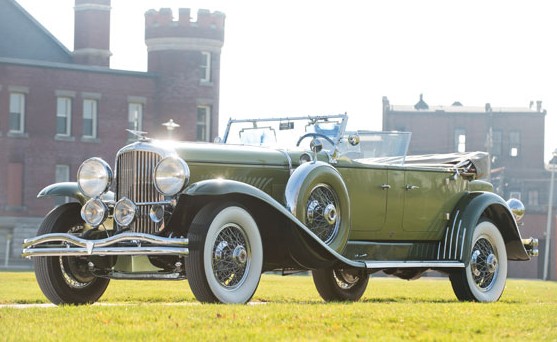1931 Duesenberg Model J Tourster by Derham
Offered by RM Auctions | Amelia Island, Florida | March 9, 2013
This is the second Derham Tourster (of the eight originally built) to be offered at an RM auction in 2013. The other one, J-423, sold for $1.32 million. That one had kind of an interesting history, being owned by an Italian Count and all. This one is slightly more interesting.
J-444 was delivered new to film comedian Joe E. Brown, who was known for his comedic roles in the 1930s-1950s (and he was the rich gentleman who hilariously courted Jack Lemmon (in drag) in the near-perfect film Some Like It Hot. He delivered the classic line “Well, nobody’s perfect”). By the time World War II came around, the car was passed around before it came into the hands of a Mr. Howard Hughes.
Hughes liked powerful things and the Duesenberg Model J fit that bill. A 265 horsepower straight-eight engine was about as good as you were going to do in the day. He, apparently, wasn’t so concerned with the gorgeous Derham Tourster body on the car – as he cut the rear half of the car off and used the car to tow gliders up and down a runway – aircraft, after all, were his business.
The car was later in the Otis Chandler collection and then the John McMullen collection and a replica of its original body was fitted at some point. This is a real Derham Tourster, but it just doesn’t have the original Derham Tourster body it came with. It is remarkable to look at nonetheless. John O’Quinn acquired it after that.
This car has been in the hands of some seriously famous people and well-respected car collectors who obviously didn’t let its “replica” body scare them (as it shouldn’t). This car sold in 2007 for $1.35 million. It won’t bring less than that this time around but that is, apparently, the going rate for a Derham Tourster today. Click here for more info and here for more from RM at Amelia Island.
Update: Sold $825,000.









